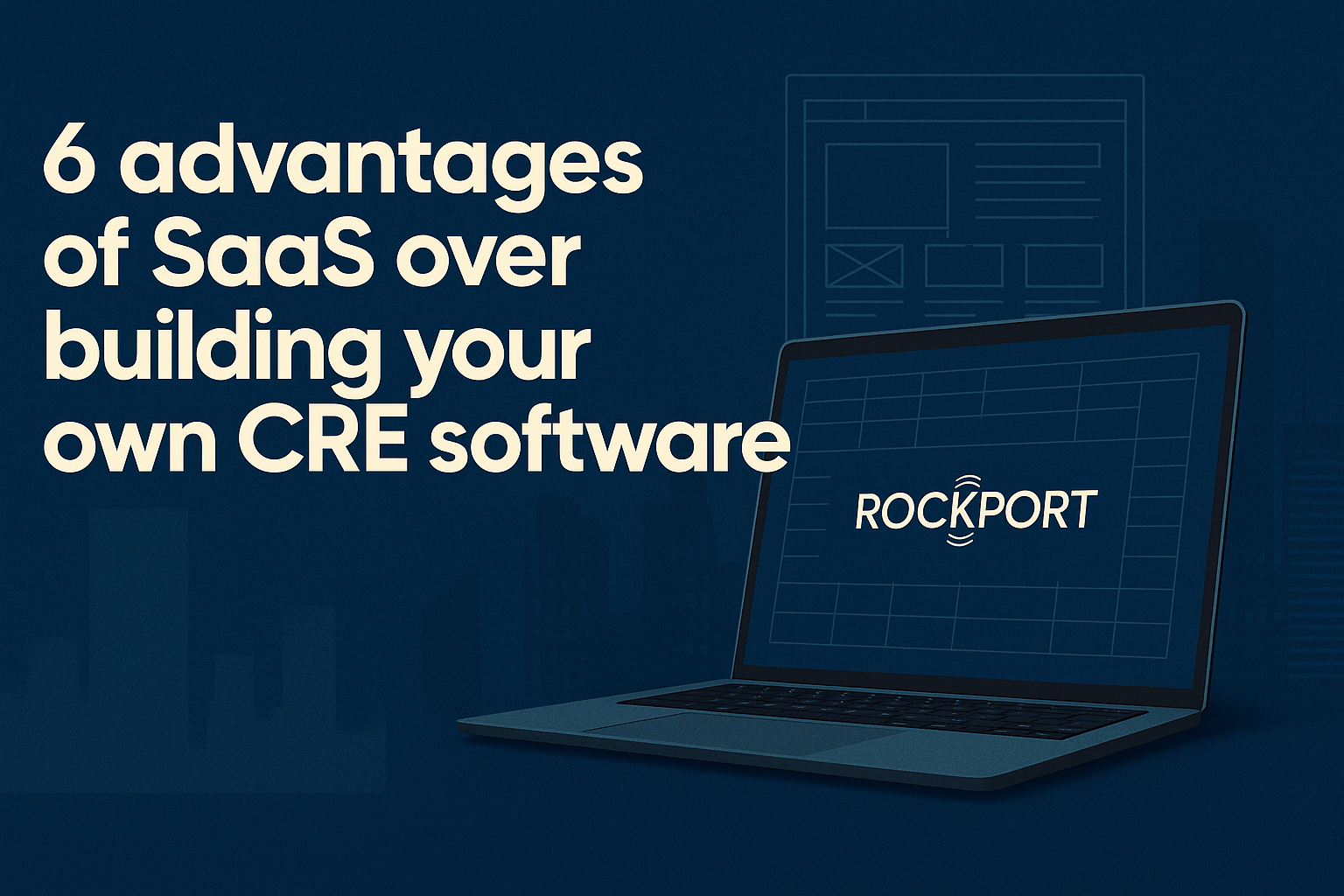6 advantages of SaaS over building your own CRE software

Every CRE lender faces the same question: build software internally, or adopt Software-as-a-Service (SaaS)? At first glance, building your own system seems to promise customization and control. In reality, most lenders find that approach expensive, slow, and hard to sustain.
By contrast, SaaS platforms are purpose-built for scale, compliance, and continuous innovation. They let lenders focus on their core business: originating, underwriting, and managing loans, rather than running a technology company on the side.
Here are six advantages of choosing SaaS over building your own CRE software:
1. Lower upfront and ongoing costs
Building an in-house platform requires significant capital. Recruiting developers, purchasing infrastructure, and maintaining code bases all add up quickly. Even a trimmed-down system can run close to $1 million, while a more sophisticated build may cost $6-8 million. At the enterprise level, projects can exceed $50 million with a high risk of failure.
By contrast, SaaS is priced as an operating expense, not a massive capital project. Subscription-based pricing means you pay only for what you use, with maintenance, updates, and security handled by the provider. This frees capital for strategic priorities.
2. Faster time to value
Internal builds often take years to reach basic functionality, and many projects collapse before completion. For lenders, that’s valuable time lost. During those years, markets, regulations, and client expectations can shift dramatically.
SaaS systems are ready to deploy quickly, giving lenders immediate access to tested tools. The speed of implementation reduces project risk and ensures lenders stay agile in competitive markets.
3. Continuous innovation
With SaaS, R&D is shared across the client base. Providers like Rockport reinvest millions annually, driven by feedback from hundreds of institutions.
An internal IT team working alone cannot match that pace or breadth of perspective. The result: lenders receive constant upgrades, new features, and system improvements without additional cost.
4. Built-in compliance and security
For lenders, compliance failures are non-negotiable risks. Internal builds often lack robust audit trails, SOC certifications, and the rigorous security frameworks that SaaS platforms are designed to deliver.
SaaS ensures regulatory confidence while reducing the IT burden of maintaining compliance standards. This is particularly important for GSE lenders and other institutions with strict oversight.
5. Scalability and sustainability
Homegrown systems often stagnate after launch when budgets tighten or priorities shift. Over time, this leaves lenders with outdated tools that cannot evolve as quickly as the market.
SaaS, however, is designed for scale and long-term sustainability. As data volumes grow and regulations change, SaaS platforms evolve alongside clients, ensuring lenders are never left behind.
6. Reduced key person risk
Internal systems often rely heavily on a handful of IT staff who hold critical system knowledge. If they leave, the entire platform is jeopardized.
SaaS eliminates this risk by providing institutional continuity, professional support, and a broader knowledge base. The system remains stable regardless of internal turnover.
The takeaway
For CRE lenders, the decision between building or buying software is not just about cost. It is about ensuring reliability, compliance, and scalability in an industry where errors can cost millions. SaaS delivers enterprise-grade systems without the hidden risks of internal builds.
The result: lenders can focus on lending, while technology quietly supports scale, security, and success.

Posted by Will Trepp
Will Trepp is the Co-Founder & COO of The Rockport Group, where he leads SaaS solutions managing over $1.5T in CRE assets. With a background in Computer Science and CRE finance, he focuses on the intersection of technology, real estate, and data.